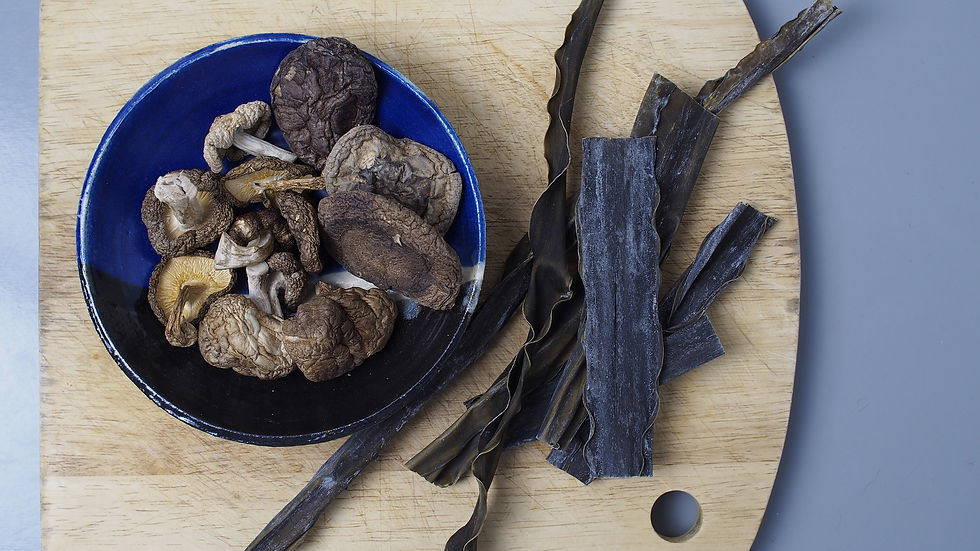Japanese stocks for vegans and vegetarians - 3 ways.
- Kurumi Hayter
- Apr 5, 2021
- 2 min read
Updated: Dec 10, 2024

Traditional japanese stock is called "dashi" which translates as "drawn out liquid" . Dashi uses combinations of fish and vegetable products. The fish product involved is invariably dried, flaked bonito - a fish that is a relative of the tuna and mackerel. You can buy bonito flakes in small packets online or in an Asian or Japanese store if there is one near you. Bonito flakes aren't cheap so to get the most out of them, a Japanese cook uses them twice. The first use produces what is called first (ichiban) dashi. Once this dashi is made, you can pour it through a sieve to recycle the bonito flakes to make "second dashi" which will not be quite so rich as first dashi but still good enough for general use as a stock. Once you've made your second dashi, you have another choice. You can either discard the flakes or you can, as many Japanese choose to do, simply add a little soy sauce and eat the flakes with rice (I do this all the time - why waste it?)
However, if for ethical, dietary or environmental reasons, you prefer not to use a fish product, you can still make "dashi" stock. below, you'll find three stocks suitable for vegetarians and vegans on my site - take a look under "stocks" section of the recipes page.
There's a kelp stock, a kelp and shiitake stock and my own stock using kelp and leaf vegetables which I use when I want a more delicate flavour. As an example you might use the richer flavours of the kelp or kelp and shiitake stocks as a noodle soup base or as a base for a miso soup. On the other hand, the more delicate stock would suit, for example, an "osumashi " consomme style soup. See the recipes on the recipes pages of my site or visit my youtube channel kurumicooks to watch the videos, Kurumi's Vegan stock or Kelp stock) or Kelp & shiitake stock.
Happy cooking, Kurumi XXXX



Commenti